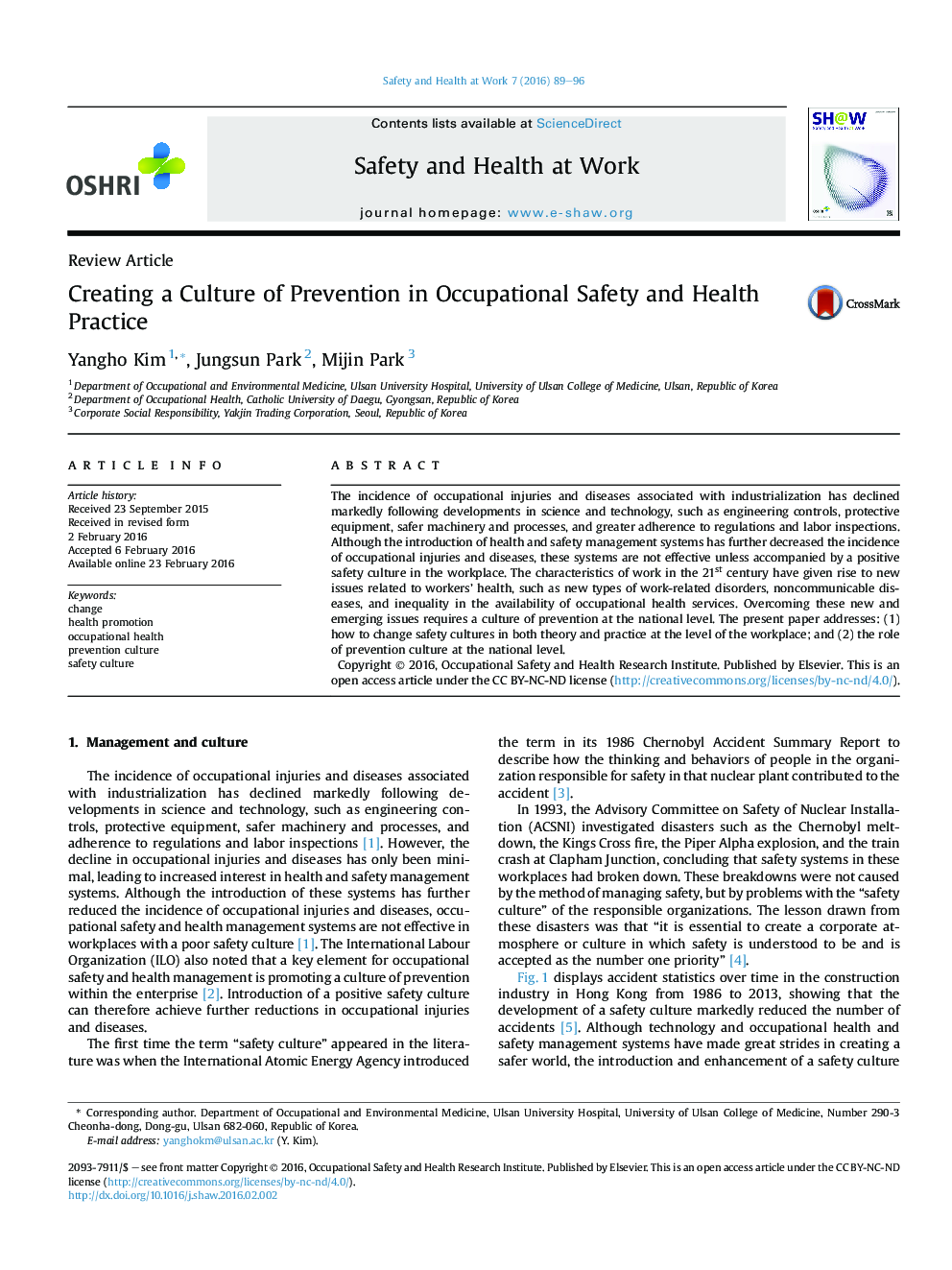| Article ID | Journal | Published Year | Pages | File Type |
|---|---|---|---|---|
| 1092014 | Safety and Health at Work | 2016 | 8 Pages |
The incidence of occupational injuries and diseases associated with industrialization has declined markedly following developments in science and technology, such as engineering controls, protective equipment, safer machinery and processes, and greater adherence to regulations and labor inspections. Although the introduction of health and safety management systems has further decreased the incidence of occupational injuries and diseases, these systems are not effective unless accompanied by a positive safety culture in the workplace. The characteristics of work in the 21st century have given rise to new issues related to workers' health, such as new types of work-related disorders, noncommunicable diseases, and inequality in the availability of occupational health services. Overcoming these new and emerging issues requires a culture of prevention at the national level. The present paper addresses: (1) how to change safety cultures in both theory and practice at the level of the workplace; and (2) the role of prevention culture at the national level.
